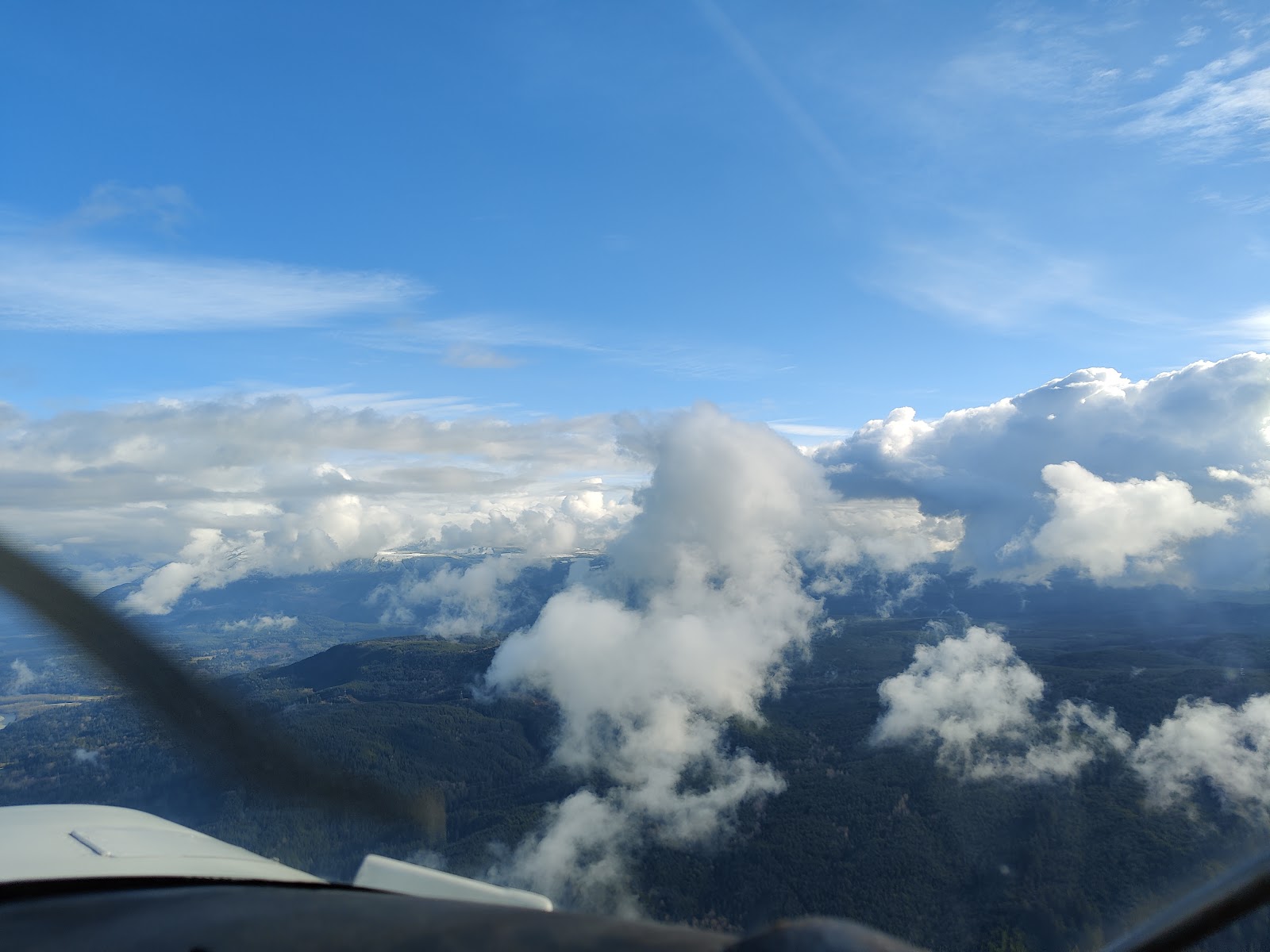Not only did the shop re-attach the exhaust pipe, they also repaired the heat damage to the cowling. This meant it took a bit longer than if they'd just re-attached the exhaust. This past Friday, I was notified that the work was done, but I found out too late to go flying that day. The weather yesterday (Saturday) was too poor for flying but today it was good enough to take her up.
It was VFR conditions, but there were scattered clouds at about 2000 feet. I flew along at about 3000 feet, weaving between the clouds to maintain sufficient clearance. It was fun, and the clouds were beautiful to look at. I remained relatively close to the airport in case the weather threatened to close in, but it never did and I flew for an hour.
The engine started right up. During the run up, when I switched to the left magneto, the engine popped a few times, but then it cleared up and ran great after that. I checked both magnetos several times to make sure it really had cleared up. I don't know what it was, but I suspect one or more of the plugs might have been slightly fouled. I had no further problems the rest of the flight. The engine ran great the whole time. I'm going to keep an eye on it, though, and if it continues to happen, I'll let Preston know and get it looked at.
This time I ran the engine at about 2600 rpm the entire flight, only slowing it down as I was entering the traffic pattern. It ran smooth and strong the whole time. I still smelled a bit of that new engine odor after I started it up but it dissipated quickly. I kept the vents open the entire time just in case.
This was also the first flight with my new Lightspeed Delta Zulu headset. I already had a Lightspeed Zulu 3, but the built-in carbon monoxide detector in the Delta Zulu was just so compelling I went ahead and purchased one. I also really like that it has a rechargeable battery pack, and you can even connect it to a power source (i.e. a USB plug, which my plane has) while it's in use to recharge it. One thing that puzzles me is that Lightspeed chose to use the UAC connector on the battery pack. The charging cable is UAC on one end, and USB-A on the other. I don't know why they didn't just go with USB-C like everyone else is doing these days. I've been able to find precious little information on the UAC plug standard, but it appears to be designed to allow power, digital data, and analog audio to be carried over the cable. I guess the idea is that you could use a UAC to Lightning connector to connect the headset to an iPhone, a UAC to USB (A or C) connector for power and/or digital audio, or a UAC to 3.5mm headphone jack for analog audio. I suppose that makes sense, but I personally think the use cases that UAC enables over USB-C don't justify having an otherwise little-used type of connector, and requiring a special cable for charging.
Here's a picture of the repaired cowl.











Comments
Post a Comment